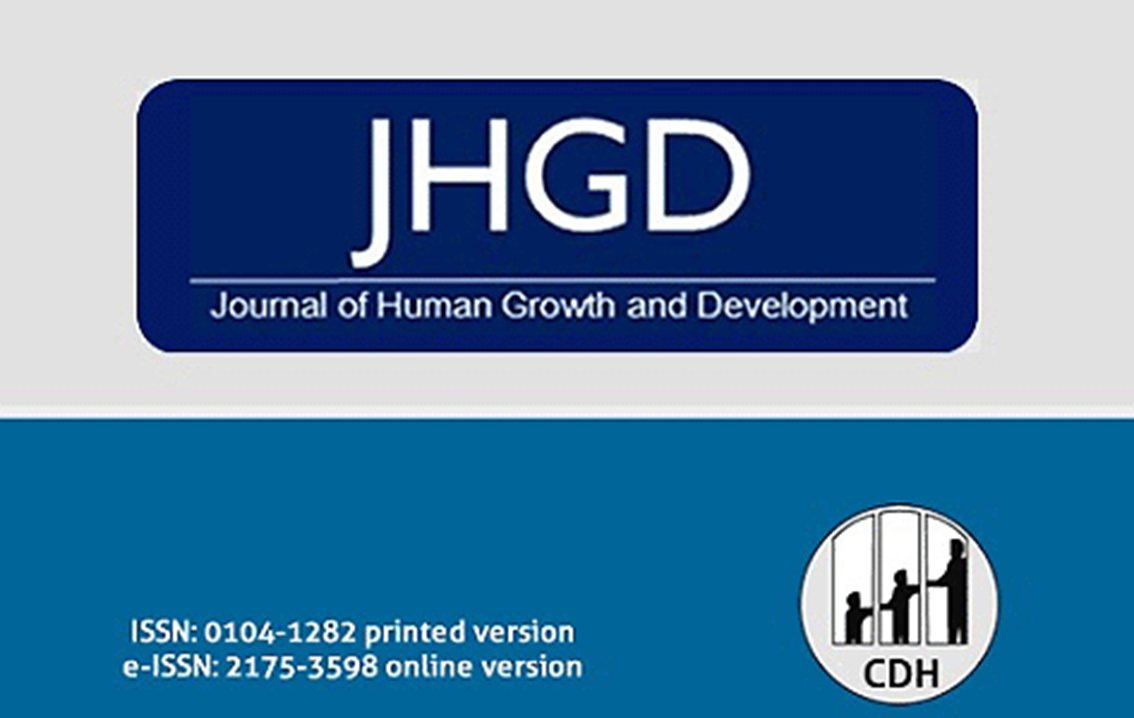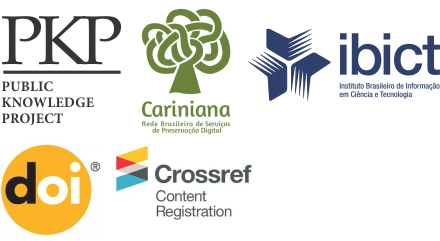The use of active methodologies as teaching strategies of measuring blood pressure
DOI:
https://doi.org/10.7322/jhgd.v30.11112Keywords:
students, knowledge, blood pressure, learning, simulationAbstract
Backgroung: Blood pressure (BP) measurement is part of the physical examination performed by students in the health field. Active methodologies may be linked to the education system, with positive contributions to knowledge about BP measurement steps.
Objective: Compare knowledge about blood pressure measurement steps, before and after an educational intervention among physiotherapy and medical students.
Methods: Quasi-experimental study, with a single group that will be in control of itself, before and after the intervention, carried out in the year 2020. The evaluations were based on the active methodologies: KAHOOT, theoretical evaluation, and the OSCE method for practical evaluation. An educational intervention was carried out, using the Inverted Classroom, followed by debates, using practice and simulation for better learning. In the pre and post-intervention comparison, the Wilcoxon test was used on the theoretical and practical knowledge of students regarding blood pressure measurement.
Results: A total of 81 students, mean age 22.31 + 3.24 years. In the theoretical knowledge, from the KAHOOT, in the comparison before and after the educational intervention, a significant difference was observed in the total number of correct answers (p <0.001), except in the “patient position” step (p = 0.227). In the analysis of practical knowledge, from the checklist used in the OSCE, there was a significant improvement after the pedagogical intervention in all analyzed stages (p = 0.001).
Conclusion: educational intervention with active methodologies inverted classroom, KAHOOT, and OSCE were useful in apprehending knowledge about Blood Pressure measurement and suggests studies of broader scope.
Downloads
References
Nobre F. Valores de pressão arterial para o diagnóstico e metas: análise crítica das diretrizes mais recentes. Revista da Sociedade de Cardiologia do Estado de São Paulo, Ribeirão Preto, v.25, n.1, p.19- 22, 2015.
Veiga EV et al. Avaliação de Técnicas da Medida da Pressão Arterial pelos Profissionais de Saúde. Arquivos Brasileiros de Cardiologia, Ribeirão Preto, v.80, n.1, p.83-89, 2003.
Dickson BK; Hajjar I. Blood pressure measurement education and evaluation program improves measurement accuracy in community-based nurses: a pilot study. Journal of the American Academy of Nurse Practitioners, Malden, v.19, n.2, p.93-102, 2007.
Cloutier, L. L’évaluation des connaissances théoriques et pratiques des infirmières à l’égard de la mesure de la pression artérielle. 2007. 266f. Thèse (Philosopiae Doctor em Scienses Cliniques) – Faculté de Médecine et des Scienses de la Santé, Université de Sherbrooke, Quebéc.
Almeida TCF; Lamas JLT. Enfermeiros de Unidade de Terapia Intensiva adulto: avaliação sobre medida direta e indireta da pressão arterial. Revista da Escola de Enfermagem da USP, São Paulo, v.47, n.2, p.369-76, 2013.
Freitas AS et al. Percepção acadêmica do processo de ensino e aprendizagem sob metodologias ativas na graduação em fisioterapia de uma universidade pública. Revista Eletrônica Acervo Saúde. Vol. Sup.33. e1232. 2019.
Santos KAD; Lima RB; Santos L; Pardo MIC; Gomes RM; Santos ACD. Importância da Metodologia Ativa na formação do enfermeiro: Implicações no processo ensino aprendizagem. Revista Eletrônica Acervo Saúde, n. 36, p. e2022, 23 dez. 2019.
Zainuddin Z; Pereira CJ. Exploring students’ competence, autonomy and relatedness in the flipped classroom pedagogical model, Journal of Further and Higher Education, vol 43: no1, 115-126. 2019.
Otero-Saborido F. et al. Flipped learning and formative evaluation in higher education, Education + Training, v. 60 no. 5, pp. 421-430. 2018.
National Education Association. Preparing 21st Century Students for a Global Society: An Educator’s Guide to the “Four Cs”. 2010. Disponível em: <http://www.nea.org/assets/docs/A-Guide-to-Four-Cs.pdf> Acesso em: 27 de. 2019.
Dutra HS; Reis VND. Experimental and quasi-experimental study designs: definitions and challenges in nursing research, Pernambuco, v.10, n. 6, p. 2230-2241, 2016.
Plump CM; Larosa J. Using Kahoot! in the Classroom to Create Engagement and Active Learning: A Game-Based Technology Solution for eLearning Novices. Management Teaching Review. Vol 2, No. 2, p. 151 -158. Fev. 2017.
Malachias MVB et al. 7ª Diretriz Brasileira de Hipertensão Arterial. Arquivos Brasileiros de Cardiologia, v.107, supl.3, p.1-83, 2016.
Rushforth HE. Objective structured clinical examination (OSCE): review of literature and implications for nursing education. Nurse Education, Reino Unido, v.27, n.5, p. 481-90, 2007.
White CB; Ross PT; Gruppen LD. Remediating Students’ Failed OSCE Performances at One School: The Effects of Self-Assessment, Reflection, and Feedback. Academic Medicine, Michigan, v.84, n.5, p.651-4, 2009.
Machado JP. Intervenção educativa sobre a medida indireta da pressão arterial por profissionais de enfermagem: uma proposta para a segurança do paciente. 2014. 187f. Tese (Doutorado em Ciências) – Escola de Enfermagem de Ribeirão Preto, Universidade de São Paulo, Ribeirão Preto, 2014.
César CPHAR. et al. Active teaching methodologies in health area: Comparison between the oral and written speeches of college students. Bioscience Journal, v. 33, n. 1, p. 219–224, 2017.
Bollela VR, Cesaretti MLR SP. Sala de aula invertida na educação para as profissões de saúde: conceitos essenciais para a prática. Rev. Eletr. Farm., v. 14, n. 1, p. 39-48, 2017
Bergmann J; Sams A. Sala de aula invertida: uma metodologia ativa de aprendizagem. ed. Rio de Janeiro: LTC, 1 2017.
Polit DF; Beck CT. Essentials of nursing research: appraising evidence for nursing practice. 7. ed. Philadelphia: Wolters Kluwer Health, 2010.
Pischetola M; Miranda LT. Metodologias ativas: uma solução simples para um problema complexo? Revista Educação e Cultura Contemporânea. v. 16, n. 43, p. 30-56, 2019
Gazzoni WC et al. Active Methodologies for Calculus in Engineering. IEEE Revista Iberoamericana de Tecnologia del Aprendizaje, v. 12, n. 4, p. 193–198, 2017.
Ghezzi JFSA; Higa EFR; Fayer D; Biffe CRF; Lemes MA; Marin MJS. (2018). Aprendizagem no cenário real na perspectiva docente. Paper presented at the 7º Congresso IberoAmericano em Investigação Qualitativa. Fortaleza (CE).
Higa EFR; Moreira HM; Pinheiro OL; Tonhom SFR; Carvalho MHR; Braccialli LAD. (2018). Caminhos da avaliação da aprendizagem ativa: visão do estudante de medicina. Revista Lusófona de Educação, 40(1), 171-184.
Missagia EV; Guerra DCS. O uso da plataforma Kahoot como complemento do gênero Exposição Oral. Anais do Simpósio Ibero-Americano de Tecnologias Educacionais, p. 383-391, 2018.
Plump CM; Larosa J. Using Kahoot! in the Classroom to Create Engagement and Active Learning: A Game-Based Technology Solution for eLearning Novices. Management Teaching Review. Vol 2, No. 2, p. 151 -158. Fev. 2017.
Licorish SA; Geroge JL; Owen HE; Daniel B. “Go Kahoot!” Enriching Classroom Engagement, Motivation and Learning Experience with Games Proceedings of the 25th International Conference on Computers in Education. 25., 2017, Otago. Anais. New Zealand: Asia-Pacific Society for Computers in Education, 2017. p. 755-764.
Amico MRA; Moraes JP; Prá R. As aplicações do kahoot! Como tecnologia educativa. Revista Redin. v. 6 Nº 1. Outubro, 2017.
Martins ER; Gouveia LMB. Aprendizagem Móvel com a Tecnologia Educacional Kahoot: Uma Discussão da Perspectiva dos Aprendizes. Revista EducaOnline. Volume 13 – No 3 Dezembro de 2019.
Espinosa-Vázquez O; Martínez-González A; Sánchez-Mendiola M; Leenen I. Análisis de un examen clínico objetivo estructurado en odontología desde la teoría de la generalizabilidad. Investig Educ Médica. 2016;6(22):109-18.
Missagia EV; Guerra DCS. O uso da plataforma Kahoot como complemento do gênero Exposição Oral. Anais do Simpósio Ibero-Americano de Tecnologias Educacionais, p. 383-391, 2018.
Sande D; Sande D. Uso do Kahoot como Ferramenta de Avaliação e Ensino- Aprendizagem no Ensino de Microbiologia Industrial. Holos (Natal. On-line), V. 1, P. 170-179, 2018.
Farahat E. et al. Exploring students perceptions of the educational value of formative objective structured clinical examination (OSCE) in a nutrition program. JAllied Health.(2016). Ap 45(1): 20-6.
Sang E. Park KN. Anderson YN. Karimbux. OSCE and Case Presentations as Active Assessments of Dental Student Performance. Journal of Dental Education March 2016, 80 (3) 334-338.
Lafleur A; Laflamme J; Leppink J; Cote L. Task demands in OSCE influence learning strategies. Teach Learn Med. 2017 Jul-Sep;29(3):286-295.
Vanlint A; Tam KL; Ys S; Visvanathan R. Evaluation of the introduction of the OSCE to the fifth-year Geriatric Medicine Teaching Programme. Australasian Journal on Ageing. 2016 Dec; 35(4):285-288.
Downloads
Published
Issue
Section
License
Copyright (c) 2020 Cynthia Kallás Bachur

This work is licensed under a Creative Commons Attribution 4.0 International License.







